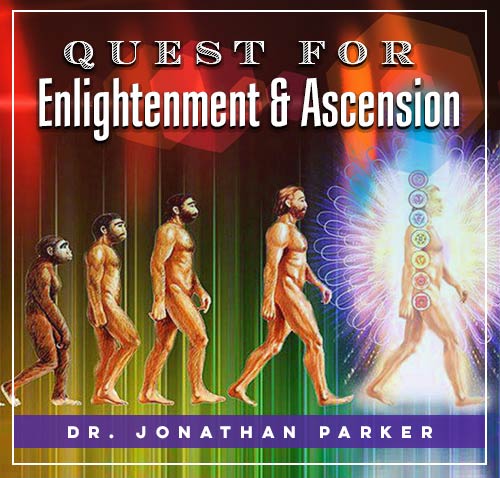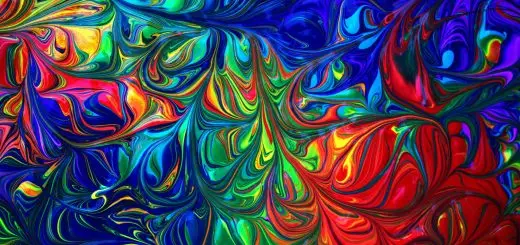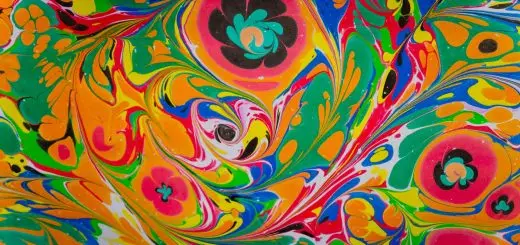Vajrayana Buddhism: Tantric Rituals for Enlightenment

Looking for more amazing products? Check out our online store and explore our collection here! Happy shopping!
Before diving in, please note: This post is for informational purposes only. If you’d like to know more about how we approach topics, feel free to check out our friendly Disclaimer Page.
Hey there, amazing readers! 
We’re committed to delivering quality posts, and your support (even just sticking around despite the ads) means everything to us. So, bear with us, and thanks for helping us keep the good vibes rolling. Now, on to the fun stuff!
TRANSLATE BUTTON AT THE END OF THE ARTICLE
Introduction to Vajrayana Buddhism
Vajrayana Buddhism, also known as Tantric Buddhism, is a form of Buddhism that originated in India and later spread to Tibet, Nepal, Bhutan, and Mongolia.
It is considered to be a more esoteric and mystical form of Buddhism compared to other schools like Theravada and Mahayana.
Vajrayana practitioners believe that through the practice of tantric rituals, one can achieve enlightenment in a single lifetime, as opposed to many lifetimes of gradual progress.
One of the key features of Vajrayana Buddhism is the use of ritual practices, visualizations, mantra recitation, and meditation on deities.
These practices are believed to accelerate the path to enlightenment and help the practitioner transcend their ordinary perception of reality.
Vajrayana Buddhism places a strong emphasis on the role of a spiritual teacher, known as a guru, who guides the student on the path to enlightenment.
Origins and Development of Vajrayana
Vajrayana Buddhism emerged in India around the 7th century CE, during a period of political and social upheaval.
The origins of Vajrayana can be traced back to texts such as the Mahayana Sutras and the Indian Tantras, which emphasize the use of advanced meditation techniques and rituals to achieve enlightenment quickly.
Vajrayana teachings were later brought to Tibet by Indian masters like Padmasambhava and Atisha, where it became a prominent form of Buddhism.
The development of Vajrayana was influenced by Indian Vajrayana masters like Nagarjuna, Vasubandhu, and Chandrakirti, who synthesized elements of Mahayana Buddhism with tantric practices.
These teachings were later integrated into Tibetan Buddhism, where they became a central part of the spiritual tradition.
Vajrayana Buddhism also spread to other regions like Nepal, Bhutan, and Mongolia, where it continues to be practiced today.
The Role of Tantra in Vajrayana Buddhism
Tantra is a key aspect of Vajrayana Buddhism, as it provides a framework for the practice of rituals and meditative techniques aimed at achieving enlightenment.
Tantra emphasizes the use of visualization, mantra, and deity yoga as a means to transform the mind and attain spiritual realization.
Tantric practices are considered to be highly transformative and are believed to have the power to purify negative karma and awaken the innate wisdom of the practitioner.
In Vajrayana Buddhism, tantra is seen as a method for harnessing the energy of the body, speech, and mind to attain enlightenment quickly.
Tantric rituals often involve the visualization of deities, the recitation of mantras, and the performance of intricate mudras (hand gestures) and mandalas (sacred diagrams).
Tantra is also characterized by its secretive nature, as teachings are often passed down orally from teacher to student in a lineage known as a transmission.
Key Principles of Vajrayana Practice
Vajrayana Buddhism is guided by several key principles that inform the practice of its rituals and meditation techniques.
Some of the core principles of Vajrayana practice include:
Bodhicitta: The altruistic intention to attain enlightenment for the benefit of all beings.
Emptiness: The realization of the true nature of reality as empty of inherent existence.
Tantra: The use of ritual practices, visualization, and mantra recitation to achieve enlightenment.
Deity Yoga: The practice of visualizing oneself as a deity to embody their qualities and attain realization.
Guru devotion: The importance of a spiritual teacher in guiding the practitioner on the path to enlightenment.
By integrating these principles into their practice, Vajrayana practitioners aim to cultivate wisdom, compassion, and skillful means to overcome obstacles on the path to enlightenment.
Tantric Rituals in Vajrayana
Tantric rituals play a central role in Vajrayana Buddhism, as they are believed to be powerful methods for purifying the mind, accumulating merit, and achieving spiritual realization.
These rituals often involve complex visualizations, mantra recitation, and offerings to deities, as well as the performance of mudras and mandalas.
Tantric rituals are designed to transform the practitioner’s perception of reality and awaken their innate wisdom.
Some common tantric rituals in Vajrayana Buddhism include:
Chöd: A practice of offering one’s body to demons and spirits in order to overcome self-grasping and attachment.
Fire puja: A ritual involving the offering of substances like grains, incense, and butter into a sacred fire to purify negative karma.
Tsa lung: A practice of manipulating the subtle energy channels in the body through breath control and visualization.
These rituals are often performed in group settings under the guidance of a qualified teacher, who helps the practitioner understand the symbolism and significance of each practice.
Visualization and Mantra in Vajrayana
Visualization and mantra recitation are key components of Vajrayana practice, as they are believed to have the power to transform the mind and bring about spiritual realization.
Visualization involves mentally creating an image of a deity or sacred object, while mantra recitation involves the repetition of sacred sounds or syllables.
These practices are used to purify the mind, cultivate concentration, and connect with the enlightened qualities of the deity.
In Vajrayana Buddhism, visualization and mantra recitation are often combined in deity yoga practices, where the practitioner visualizes themselves as a deity and recites the corresponding mantra to embody their qualities.
Through these practices, practitioners aim to overcome negative emotions, purify obscurations, and awaken their innate wisdom.
Visualization and mantra recitation are considered powerful tools for transforming the mind and accelerating the path to enlightenment.
Initiation and Transmission in Vajrayana
Initiation, also known as empowerment, is a central aspect of Vajrayana practice, as it is believed to transmit the blessings and wisdom of the lineage from teacher to student.
Initiation involves a formal ceremony in which the student receives the blessings, teachings, and practices of a particular deity or tantric tradition from their guru.
Through initiation, the student establishes a spiritual connection with the lineage and gains the empowerment to engage in advanced tantric practices.
Transmission is another key component of Vajrayana practice, as it involves the direct transmission of teachings, practices, and blessings from teacher to student.
Transmission can take various forms, including oral instruction, symbolic gestures, and personal guidance from the guru.
The transmission of teachings ensures the continuity and authenticity of the lineage and helps the practitioner understand the deeper meaning and symbolism of tantric practices.
Deities and Buddhas in Vajrayana
Deities and Buddhas play a central role in Vajrayana Buddhism, as they are seen as embodiments of enlightened qualities and wisdom.
In Vajrayana practice, deities are visualized as manifestations of the practitioner’s own enlightened potential, and meditating on them is believed to bring about spiritual realization.
Some of the key deities in Vajrayana Buddhism include:
Vajrasattva: The Buddha of purification, who helps practitioners purify negative karma and obscurations.
Avalokiteshvara: The Buddha of compassion, who embodies the quality of compassion and helps beings overcome suffering.
Manjushri: The Buddha of wisdom, who embodies the quality of wisdom and helps practitioners develop insight into the nature of reality.
By meditating on these deities and invoking their blessings through mantra recitation and visualization, practitioners aim to awaken the innate wisdom and compassion within themselves.
Symbolism in Vajrayana Rituals
Symbolism plays a significant role in Vajrayana rituals, as it is used to convey deeper meanings and insights about the nature of reality and the path to enlightenment.
In Vajrayana Buddhism, symbols like the vajra (diamond thunderbolt), bell, lotus, and mandala are used to represent aspects of the enlightened mind and the stages of spiritual development.
These symbols are often visualized and used in ritual practices to generate positive qualities and overcome obstacles on the path to enlightenment.
Mandalas, in particular, are intricate geometric designs that represent the enlightened universe and the deity’s palace.
Mandalas are used as a focal point for meditation and visualization, as they help the practitioner understand the interconnection of all phenomena and the inherent purity of the mind.
Symbolism in Vajrayana rituals is intended to evoke a sense of sacredness, inspire devotion, and deepen the practitioner’s understanding of the teachings.
Guru Yoga in Vajrayana Buddhism
Guru yoga, or devotion to the spiritual teacher, is a fundamental practice in Vajrayana Buddhism, as it is believed to be the key to unlocking the blessings and wisdom of the lineage.
The guru is seen as the embodiment of the Buddha and the source of inspiration, guidance, and blessings on the path to enlightenment.
Through guru yoga practice, the practitioner cultivates a deep connection with their guru and receives the blessings and teachings necessary for spiritual realization.
Guru yoga involves visualizing the guru as a manifestation of the Buddha and invoking their blessings through mantra recitation and prayer.
The practitioner develops a sense of devotion, gratitude, and trust towards their guru, which is seen as the foundation for spiritual progress.
Guru yoga is considered essential in Vajrayana practice, as it helps the practitioner overcome obstacles, purify negative karma, and develop the qualities of wisdom and compassion.
Challenges and Controversies in Vajrayana
Vajrayana Buddhism has faced challenges and controversies throughout its history, particularly around issues of secrecy, power dynamics, and ethical conduct.
The esoteric nature of Vajrayana teachings has led to concerns about the misuse of tantric practices for personal gain or manipulation.
Some critics have raised questions about the role of the guru in Vajrayana practice, highlighting cases of abuse and misconduct by spiritual teachers.
Another challenge in Vajrayana Buddhism is the tension between tradition and modernity, as practitioners navigate between ancient rituals and contemporary values.
The transmission of teachings and practices in Vajrayana can sometimes be hindered by cultural barriers, language differences, and conflicting interpretations of the teachings.
These challenges have sparked debates within the Vajrayana community about the need for transparency, accountability, and ethical standards in spiritual practice.
Benefits of Vajrayana Practice
Despite the challenges and controversies, Vajrayana practice offers numerous benefits for those who are drawn to its transformative teachings and practices.
Some of the key benefits of Vajrayana practice include:
Accelerated path to enlightenment: Vajrayana offers a direct and swift path to enlightenment through the use of advanced meditation techniques and rituals.
Purification of negative karma: Tantric practices are believed to purify negative karma and obscurations, leading to spiritual realization and liberation.
Cultivation of wisdom and compassion: Vajrayana practices help practitioners develop wisdom, compassion, and skillful means to benefit all beings.
Transformation of the mind: Visualization, mantra recitation, and deity yoga practices are powerful tools for transforming the mind and overcoming obstacles on the spiritual path.
Connection to the lineage: Through initiation and transmission, practitioners establish a deep connection to the lineage and receive the blessings and guidance of enlightened masters.
Overall, Vajrayana practice offers a profound and transformative path to enlightenment for those who are willing to engage in its rituals, meditative practices, and teachings with sincerity and devotion.
Conclusion
Vajrayana Buddhism, with its emphasis on tantric rituals, visualization, mantra recitation, and devotion to the guru, offers a unique and powerful path to enlightenment.
By integrating key principles like bodhicitta, emptiness, and deity yoga into their practice, Vajrayana practitioners aim to cultivate wisdom, compassion, and skillful means on the path to liberation.
Despite challenges and controversies, Vajrayana practice continues to inspire and guide practitioners seeking a direct and accelerated path to spiritual realization.
With its rich symbolism, transformative practices, and deep spiritual insights, Vajrayana Buddhism remains a vibrant and dynamic tradition that continues to impact the lives of countless individuals seeking enlightenment.

The Enlightenment Journey is a remarkable collection of writings authored by a distinguished group of experts in the fields of spirituality, new age, and esoteric knowledge.
This anthology features a diverse assembly of well-experienced authors who bring their profound insights and credible perspectives to the forefront.
Each contributor possesses a wealth of knowledge and wisdom, making them authorities in their respective domains.
Together, they offer readers a transformative journey into the realms of spiritual growth, self-discovery, and esoteric enlightenment.
The Enlightenment Journey is a testament to the collective expertise of these luminaries, providing readers with a rich tapestry of ideas and information to illuminate their spiritual path.
Our Diverse Expertise
While our primary focus is on spirituality and esotericism, we are equally passionate about exploring a wide range of other topics and niches 

To ensure we provide the most accurate and valuable insights, we collaborate with trusted experts in their respective domains 
Our blog originally focused on spirituality and metaphysics, but we’ve since expanded to cover a wide range of niches. Don’t worry—we continue to publish a lot of articles on spirituality! Frequently visit our blog to explore our diverse content and stay tuned for more insightful reads.
Hey there, amazing reader! 
Check out our store here and take a peek at some of our featured products below! Thanks for being awesome!












